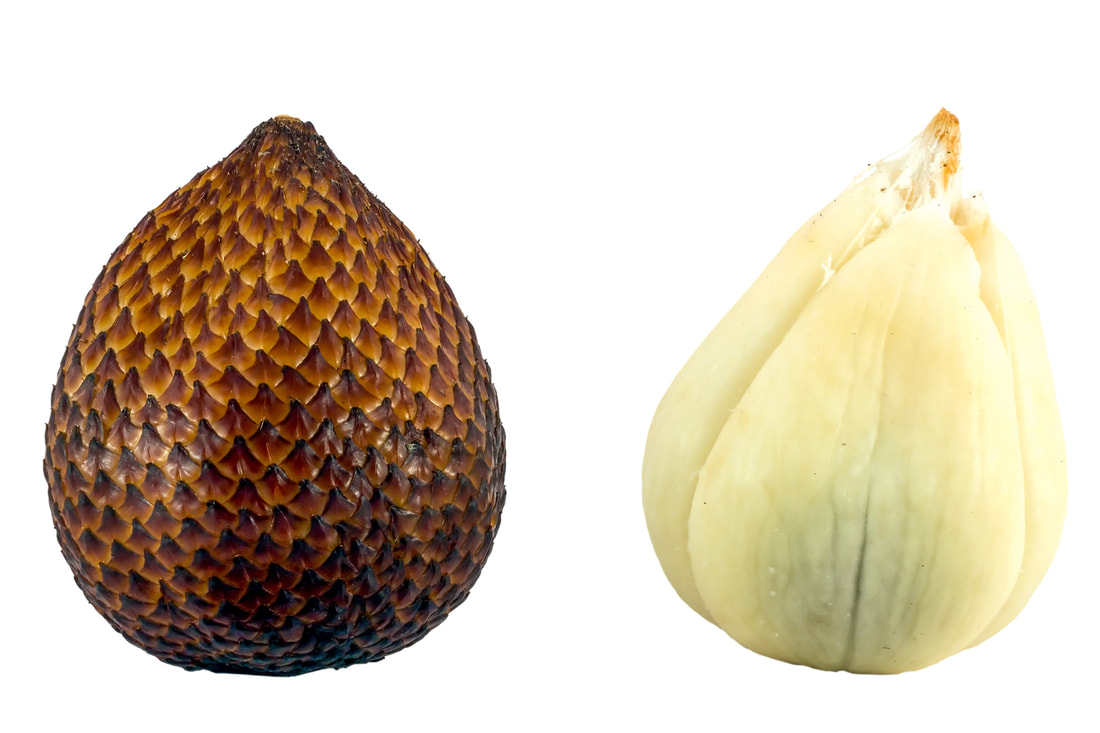|
Food is important, especially if you are on a remote island with not much distraction. And Indonesians love to eat, so they talk about food a lot. Maybe not the Papuans so much, as their menu tends to be dominated by rice, fish, and whatever vegetables their village or family garden produces. But since many of my female colleagues are from Java and love to cook and eat, we talk about Javanese dishes a lot. During regular operation with guests, we have a guest buffet and a staff buffet. The staff buffet usually features local dishes composed of rice (for breakfast sometimes also noodles), vegetables and either fish or chicken, sometimes even both. Very often there is also tofu or tempeh, as not only vegetarians like both. Our guests are welcome help themselves from the staff buffet, but only the adventurous ones usually do. Most stick to the guest buffet which features a mix of Asian and western menus. It is excellent, and our kitchen team gets a lot of compliments for conjuring up such a variety of dishes with the limited possibilities we have here on the island. On various occasions, I’ve been asked if there were any produce they use here that I didn’t know before. The first thing that comes to my mind is the «Papeda», a congee from the sago tree that is typical for eastern Indonesia. It is used as a basic food and the counterpart to rice which is more used in western and central Indonesian cuisine. Papeda is made from sago starch that the locals get from cutting the sago palm tree in half and scraping the soft inner parts, producing a crude sago pith flour. Papeda is then made by cooking the sago starch with water until it has a glue-like consistency. And that’s exactly what it looks like – glue! I tried it once and didn’t particularly like it, but maybe it was just the look of it that made me dislike it. I may have to try it again, with less prejudice, to give it a second chance. But then again, I really like my rice, so why bother? What I absolutely love, on the other hand, is the Salak fruit! It is also known as the «snake fruit» due to its reddish-brown scaly skin. It is about the size and shape of a ripe fig, and the pulp is what you eat. The palm tree it grows on is native to Java and Sumatra, but it also grows in other areas of Indonesia. Inside, the fruit consists of 3 pieces which look like big peeled garlic cloves. They have an apple-like texture and taste sweet and acidic, with a strong astringent edge. Not all our guests like them, but I’m absolutely addicted. We buy them in Sorong as they are not cultivated here, but when we have guests, there are always some in the big fruit basket at the restaurant. As they don’t keep very long, you have to eat them rather quickly, which is why we don’t always have them now. Our water and food supply only comes every 3-4 weeks at the moment, so we need to make sure we only order things we can keep for a while. But yesterday, I was told by our cook that there are some Salak in the fridge and that I was allowed to have some. What a joy, I really missed them when I was back home! One of the things I had to get used to is the fried food they eat in Indonesia. Especially fish (I don’t eat meat, so I couldn’t tell) is fried for a very long time until it gets hard and dry. They like it like this here. And they also like to eat small fish with lots of bones, so they can chew and work on them for a long time. I haven’t learned to deal with this yet because, in order to avoid swallowing fish bones, it just takes me so long to eat that everybody else has left the restaurant by the time I’m about half way through. The kitchen team anticipates this by now and either cooks me eggs or a piece of fish with less bones. Thank you, guys!
The endless variety of chilies was also new to me when I arrived here. I love our home-made Sambal, but I didn’t know that there are so many different variations of it. Depending on the size and type of chili, and whether it’s cooked or raw, the Sambal turns out differently. Sometimes, it is hot as hell and sometimes it seems very moderate (or have I just gotten so used to eating spicy food?). And there are certain types of Sambal that go with certain types of food. There is one of the uncooked types they usually serve with grilled fish that can be particularly spicy, even though it looks very innocent. So, you better watch out when you help yourself generously to what looks like a raw salad of small cut tomatoes, cucumbers and herbs! Currently, the variety of our dishes is a little limited as we have to save money and adapt to the rarer supply transfers. We don’t have as many different types of fruit as when we have guests and the choice of vegetables is smaller. There are often eggs instead of meat or fish, but I don’t mind that. So, don’t worry! We still get enough food and it continues to be delicious. And if I end up losing a little weight in the process, even better. Then I’ll be ready to dig into the delicious deserts our kitchen team creates every evening when our guests come back!
2 Comments
Gabi
6/3/2021 18:43:56
This all sounds delicious! Well maybe except for the very spicy sauces, I would probably skip those ;)
Reply
Monika
7/3/2021 19:24:24
Really? Even the Papeda??
Reply
Leave a Reply. |
#TalkingWithMangrovesI never even dreamt of working on a remote island in Indonesia, but life has a way of taking care of itself… Archives
May 2021
|
LocationPulau Pef - Raja Ampat - Indonesia
|
Follow Us
Our Office in SorongJl. Gagak No.7 B, Km 7 Gunung, RT.001 RW.002
Kelurahan Malengkedi, Remu Utara PO Box No.130 Sorong 98416 – Papua Barat - Indonesia Phone +62 (0)811 485 7711 |
Rates and information are subject to change without notice. Terms and Conditions apply. All rights reserved.
Imagery is copyrighted and may not be used without express permission and written consent.
Images and videos of the following photographers / videographers were used for this website:
Barbara Moll, Claudia Peyer, Pere Rubio, Thomas Haider, Filip Staes, Christian Kaufmann, Dos Winkel, Duri Mayer, Jürgen Freund,
Daniel Brinckmann, Amanda Künzle, Joram Zimmermann, Ramon Sibold, Roman Keller, Barbara & Markus Aichinger, Fabienne Hadorn, Andreas Hadorn,
Armin Keller, Marcel Rudolph, Sabrina Inderbitzi, Peter Löseke
© 2024
Imagery is copyrighted and may not be used without express permission and written consent.
Images and videos of the following photographers / videographers were used for this website:
Barbara Moll, Claudia Peyer, Pere Rubio, Thomas Haider, Filip Staes, Christian Kaufmann, Dos Winkel, Duri Mayer, Jürgen Freund,
Daniel Brinckmann, Amanda Künzle, Joram Zimmermann, Ramon Sibold, Roman Keller, Barbara & Markus Aichinger, Fabienne Hadorn, Andreas Hadorn,
Armin Keller, Marcel Rudolph, Sabrina Inderbitzi, Peter Löseke
© 2024


 RSS Feed
RSS Feed

